Iopub Data Rate Exceeded.
In the realm of data analysis and experimentation, the iopub data rate exceeded error can be quite a frustrating roadblock. This error typically occurs when the input/output (I/O) operations in your code generate an excessive amount of data, overwhelming the communication channel between the kernel and the front-end interface. In this article, we will delve into the topic of IOPub Data Rate Exceeded, its symptoms, causes, and most importantly, the solutions to overcome this hurdle. Additionally, we will provide preventive measures and further assistance for resolving this error.
What is IOPub Data Rate Exceeded?
The IOPub Data Rate Exceeded error arises when your Jupyter notebook or Google Colab session generates too much output data to be handled by the communication channel. It prevents the kernel from sending data to the front-end interface, resulting in this error message. This issue can hinder your ability to display visualizations, print large outputs, or even execute specific code blocks altogether.
Symptoms of IOPub Data Rate Exceeded:
1. Slow or unresponsive notebook interface
2. Failure to display or update visualizations
3. Random interruptions during the execution of code cells
4. Incomplete or missing output from code cells
5. Error messages related to IOPub data rate exceeded
Causes of IOPub Data Rate Exceeded:
1. Generating an excessive amount of output data within a short time frame
2. Displaying large datasets or complex visualizations in the notebook
3. Looping constructs that generate substantial output in each iteration
4. Errors in code that cause infinite loops or rapid generation of data
5. Memory limitations or hardware constraints
Solutions for IOPub Data Rate Exceeded:
1. Reducing Output: Evaluate whether displaying all the output is necessary. Consider removing unnecessary print statements or limiting the number of output rows or columns.
2. Paging Output: If you need to display a large dataset, consider paginating the output or using interactive widgets to handle the data in smaller chunks.
3. Limiting Code Execution: Instead of executing the entire code in one go, divide it into smaller code cells. This approach helps to prevent overwhelming the I/O communication channel and allows you to have better control over the generation of data.
4. Clearing Output: Regularly clear the output of code cells that generate substantial output, especially if it’s no longer relevant. This will free up memory and prevent potential IOPub Data Rate Exceeded errors.
5. Configuring Data Rate Limit: Adjust the data rate limit configuration to increase the maximum amount of data that can be sent from the kernel to the front-end interface. This can be done by modifying the NotebookApp.iopub_data_rate_limit variable in the configuration file.
Preventive measures for IOPub Data Rate Exceeded:
1. Optimize Code Efficiency: Ensure that your code is written in an efficient manner, minimizing unnecessary loops, and optimizing data processing whenever possible.
2. Splitting Large Tasks: Break down large tasks into smaller, more manageable subtasks. This reduces the overall data generation and helps prevent IOPub Data Rate Exceeded errors.
3. Streamlining Visualizations: If you are dealing with large visualizations, consider using libraries or techniques that allow for incremental rendering or interactive exploration of the data.
4. Monitoring Hardware Resources: Keep an eye on the memory and CPU usage while executing your code. Close any unnecessary applications or processes that may be consuming resources unnecessarily.
Further assistance for resolving IOPub Data Rate Exceeded:
If you are still encountering the IOPub Data Rate Exceeded error despite implementing the suggested solutions, consider reaching out to the support forums or communities associated with the platform you are using. Providing detailed information about your code, dataset, and hardware specifications will help others assist you effectively.
In the case of Google Colab, you can explore the Colab-specific documentation and forums for additional guidance on troubleshooting this error. The Colab community is generally quick to respond and can provide insights based on their experiences.
In summary, the IOPub Data Rate Exceeded error can be a frustrating obstacle while working with Jupyter notebooks or Google Colab. By understanding the symptoms, causes, and implementing the provided solutions, you can overcome this issue and continue your data analysis or experimentation seamlessly.
Keywords: Iopub data rate exceeded Google Colab, IOPub data rate exceeded, NotebookApp iopub_data_rate_limit colab, To change this limit set the config variable NotebookApp iopub_data_rate_limit colabiopub data rate exceeded.
04: \”Iopub Data Rate Exceeded\”
Keywords searched by users: iopub data rate exceeded. Iopub data rate exceeded Google Colab, IOPub data rate exceeded, NotebookApp iopub_data_rate_limit colab, To change this limit set the config variable NotebookApp iopub_data_rate_limit colab
Categories: Top 28 Iopub Data Rate Exceeded.
See more here: nhanvietluanvan.com
Iopub Data Rate Exceeded Google Colab
When using Colab, it is important to understand that there are limitations on data display due to IOPub rate limits. By default, Colab allows a maximum data rate of 100Mb per second. If, for any reason, your code generates output at a higher rate, you will encounter the IOPub data rate exceeded error. This restriction is in place to prevent abuse and ensure optimal performance for all Colab users.
There are several reasons why this error can occur. One common cause is when you are trying to print an excessive amount of data. For example, if your code generates a large output, such as printing huge lists or data frames, the exceeding data rate will trigger the error. Additionally, if you are running a loop that generates a high volume of output within a short period of time, the error might also occur.
Another potential cause is related to frequent updates or progress bars. When using libraries like tqdm, which display real-time progress information, large outputs may be generated frequently. This can quickly surpass the IOPub data rate limit, leading to the error. Similarly, continuous streaming of data from external sources could also trigger the error, especially if the data rate is high.
Now that we have discussed the potential causes of the IOPub data rate exceeded error, let’s explore some possible solutions to troubleshoot it:
1. Reduce your output: If your code generates a large amount of output, consider reducing it. Instead of printing every item in a list, you can print a summary or a subset of the data. This will help to decrease the data rate and might resolve the issue.
2. Use appropriate data structures: Some data structures, such as Pandas DataFrames, can generate large outputs when printed. To avoid the IOPub error, utilize methods like `.head()` or `.tail()` to display a concise summary of the data.
3. Limit the display: Instead of printing all the information, you can selectively display specific parts of the output that are relevant to your analysis. This can be achieved by using conditional statements or filters to control what gets printed.
4. Disable progress bars: If you are using libraries like tqdm, consider disabling the progress bar temporarily by setting the `disable=True` parameter. This can help reduce the frequent updates and alleviate the error.
5. Batch processing: If your code generates a large amount of output within a loop, you can introduce delays or batch processing to limit the data rate. By introducing sleep intervals or printing output periodically, you can ensure that the data rate remains within the IOPub limit.
Now, let’s address some frequently asked questions about the IOPub data rate exceeded error in Google Colab:
Q1. Can I change the IOPub data rate limit in Google Colab?
A1. Unfortunately, as of now, there is no option to modify the IOPub data rate limit in Colab. The limit is fixed at 100Mb per second.
Q2. Will upgrading to a paid Colab subscription resolve the IOPub error?
A2. No, upgrading to a paid Colab subscription does not affect the IOPub data rate limit. The limit remains the same for both free and paid users.
Q3. Is there a way to bypass the IOPub data rate limit?
A3. No, there is no direct way to bypass the IOPub data rate limit. However, by implementing the troubleshooting measures mentioned above, you can work around the issue and reduce the likelihood of encountering the error.
Q4. Does the IOPub error affect the execution of the code?
A4. Generally, the IOPub data rate exceeded error does not hinder the execution of the code itself. It only affects the output display. However, it is important to monitor the code execution to ensure that no critical information is missed due to the error.
In conclusion, encountering the IOPub data rate exceeded error in Google Colab can be frustrating, but by understanding its causes and implementing appropriate troubleshooting measures, you can overcome this limitation. Remember to optimize your output, utilize relevant data structures, and control the data display to ensure a smooth experience while running your code in Colab.
Iopub Data Rate Exceeded
In the world of data analysis and exploration, Jupyter notebooks have quickly become the go-to tool for many researchers and data scientists. These interactive notebooks provide an easy-to-use interface to write, run, and communicate code alongside visualizations and explanatory text. However, one common issue that notebook users often encounter is the dreaded “IOPub data rate exceeded” error message.
This error occurs when the IOPub data rate limit is exceeded, causing the notebook interface to become unresponsive or crash altogether. Understanding the root cause of this error and how to resolve it is essential for a smooth and productive notebook experience.
What is IOPub Data Rate?
To comprehend the issue at hand, it is crucial to understand what IOPub data rate represents. When running code in a Jupyter notebook, the stdout and stderr streams are captured and displayed as output in the notebook interface through a component called IOPub. This data includes both text and graphical output generated by executing code cells.
The IOPub data rate corresponds to the rate at which this output data is being produced and transmitted through the Jupyter kernel to the notebook front end. Each notebook has a predefined data rate limit that restricts the amount of IOPub data that can be published per second. This limit is in place to prevent notebook crashes caused by an excessive amount of output being generated by running code.
Why does the IOPub Data Rate Exceeded Error Occur?
The “IOPub data rate exceeded” error message occurs when the rate at which the IOPub data is being generated exceeds the specified limit set by the notebook. When this happens, the front end of the Jupyter notebook cannot keep up with the incoming data, resulting in poor performance or a complete freeze of the interface.
There are several factors that can lead to exceeding the IOPub data rate limit. Running computationally intensive code that generates a large volume of output, such as printing a massive amount of text or continuously updating plots, can quickly exceed the data rate limit. Additionally, using external libraries or tools that produce a high amount of output, such as image processing libraries or interactive widgets, can also contribute to the problem.
Resolving the IOPub Data Rate Exceeded Error
When faced with the “IOPub data rate exceeded” error, there are various ways to address the issue and prevent it from reoccurring:
1. Reduce Output Generation: Analyze your code and identify any unnecessary or excessive output generation. Consider limiting or restructuring your code to generate less output, such as using more concise print statements or reducing the frequency of plot updates.
2. Disabling Output: If reducing output generation is not feasible, you can selectively disable output for specific cells or code blocks using Jupyter’s display options. This will prevent overwhelming the front end with excessive data.
3. Batch Output: Instead of generating output continuously, you can accumulate the data and display it in batches. By batching the output, you can effectively control and manage the data rate, preventing it from exceeding the limit.
4. Use Logging: Instead of relying solely on print statements, consider using logging methods. Log messages are typically displayed at a controlled rate and can be filtered to show only relevant information, reducing the chances of exceeding the data rate.
5. Optimize Code Performance: Code optimization techniques, such as reducing unnecessary computations or employing more efficient algorithms, can significantly impact the amount of output generated and the resulting data rate.
Frequently Asked Questions (FAQs)
Q: What should I do if I encounter the “IOPub data rate exceeded” error?
A: First, analyze your code to identify any unnecessary output generation. Reduce output or batch it to control the data rate. If needed, selectively disable output or employ logging methods.
Q: Can I change the IOPub data rate limit?
A: By default, the data rate limit is set by Jupyter, and changing it requires modifying configuration files. However, it is always recommended to focus on optimizing code and data generation to avoid changing the limit.
Q: Are there specific libraries or tools that are more likely to cause this error?
A: Libraries that produce high volumes of output, such as image processing libraries or interactive widgets, can increase the likelihood of encountering the “IOPub data rate exceeded” error.
Q: Does this error indicate a problem with my computer’s performance?
A: No, this error is specific to the Jupyter notebook interface and indicates that the data rate limit has been exceeded. It does not reflect any performance issues with your computer.
Q: Can I increase the data rate limit?
A: While it is possible to modify the IOPub data rate limit, doing so should be approached with caution. It is generally recommended to optimize code and reduce excessive output instead of changing the limit.
Conclusion
The “IOPub data rate exceeded” error is a common roadblock for Jupyter notebook users when working with code that generates excessive output. Understanding the cause of this error and implementing strategies to mitigate it is crucial for maintaining a smooth and productive data analysis workflow. By optimizing code, reducing output generation, and selectively disabling or batching output, users can effectively prevent the IOPub data rate from exceeding its limit, facilitating an uninterrupted and efficient notebook experience.
Notebookapp Iopub_Data_Rate_Limit Colab
Colaboratory, commonly known as Colab, is a cloud-based development environment provided by Google. It enables users to write and execute code in a web browser, eliminating the need for local installations and configuration. One of the key features of Colab is the NotebookApp iopub_data_rate_limit, which plays a crucial role in managing the input and output communication in notebooks. In this article, we will delve into the details of NotebookApp iopub_data_rate_limit Colab and explore its significance in enhancing the user experience. Additionally, we will address frequently asked questions to provide a comprehensive understanding of the topic.
What is NotebookApp iopub_data_rate_limit?
NotebookApp iopub_data_rate_limit is a configuration parameter in Colab notebooks that regulates the rate at which input and output communication occurs. It is specifically associated with the IOPub communication channel, which is responsible for handling the exchange of data between the kernel (backend computational engine) and the frontend interface. As the notebook environment involves continuous interactions, such as executing code cells, displaying output, and handling user inputs, this rate limit acts as a control mechanism to prevent overwhelming the communication channel.
Understanding the Significance of iopub_data_rate_limit
The iopub_data_rate_limit plays a crucial role in maintaining the stability and smooth functioning of a Colab notebook. By limiting the IO (input/output) communication rate, it prevents the notebook from becoming unresponsive or freezing. The rate limit ensures that the notebook does not get overwhelmed by a large amount of output data, which could hamper the responsiveness and overall user experience.
This configuration parameter is particularly important in scenarios where the execution of a code cell generates a substantial volume of output or a high data transfer rate. Without a rate limit, the notebook may struggle to handle and display the output efficiently, leading to delays or freezing. The iopub_data_rate_limit places a cap on the rate of output data, allowing the notebook to maintain responsiveness and continue executing code cells smoothly.
Default Value and Maximum Limit
By default, the NotebookApp iopub_data_rate_limit is set to 1000 (bytes per second), ensuring a controlled flow of data between the backend kernel and the frontend interface. However, advanced users or those with specific requirements can adjust this limit according to their needs. The maximum allowed value for this parameter is 10000000, which corresponds to 10 MB per second. It is worth noting that setting the limit too high may strain system resources and result in slower notebook performance, while a value set too low might affect the responsiveness of the notebook.
FAQs:
Q1: How can we change the value of NotebookApp iopub_data_rate_limit?
To modify the value of NotebookApp iopub_data_rate_limit, you can set it as a notebook configuration option. Open a Colab notebook, select “Runtime” from the top menu, click on “Change runtime type,” and in the popup window, choose “Python 3” as the runtime type. Under the “Advanced settings” section, you can modify the value in the “iopub_data_rate_limit” field. Remember, it is vital to choose an appropriate limit that balances performance and responsiveness.
Q2: What happens if the rate limit is exceeded?
If the rate limit set by NotebookApp iopub_data_rate_limit is exceeded, the notebook environment may experience slow responsiveness or even freeze. The excessive amount of output data overwhelms the communication channel, making it challenging for the notebook to handle and display the output. In such cases, it is recommended to either adjust the rate limit or optimize the code to reduce the output volume.
Q3: Are there any risks in setting a very high rate limit?
While setting a higher rate limit might seem tempting to speed up the output display, it can strain the system resources. A very high rate limit can lead to increased memory and processing requirements, eventually affecting the overall notebook performance. It is advisable to strike a balance between a reasonable rate limit and the desired responsiveness.
Q4: Can NotebookApp iopub_data_rate_limit affect code execution?
NotebookApp iopub_data_rate_limit primarily focuses on regulating the input and output communication between the notebook frontend and kernel backend. Its main purpose is to maintain responsiveness rather than directly impacting code execution. However, in cases where the code execution generates an excessive amount of output data, a low rate limit can indirectly affect execution time if the output is not promptly displayed.
Conclusion
NotebookApp iopub_data_rate_limit in Colab notebooks serves as an essential parameter to manage input and output communication, ensuring a smooth and responsive user experience. By imposing a limit on the rate of data flow, the notebook becomes more stable and efficient in handling large amounts of output. Despite the default value being suitable for most use cases, advanced users can tailor the parameter according to specific requirements. It is necessary to find an appropriate balance between rate limit, performance, and responsiveness, and the ability to adjust this parameter makes Colab a flexible environment for users across various domains.
Images related to the topic iopub data rate exceeded.
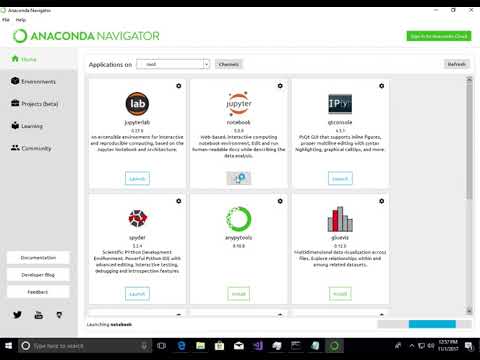
Found 21 images related to iopub data rate exceeded. theme

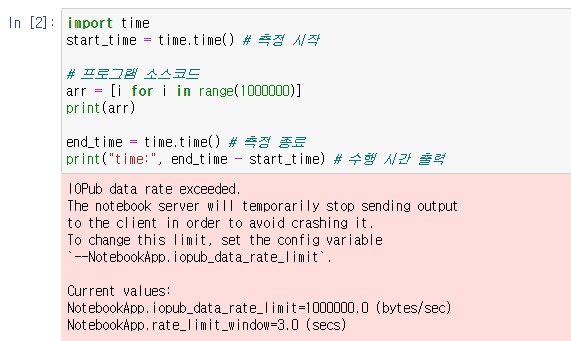

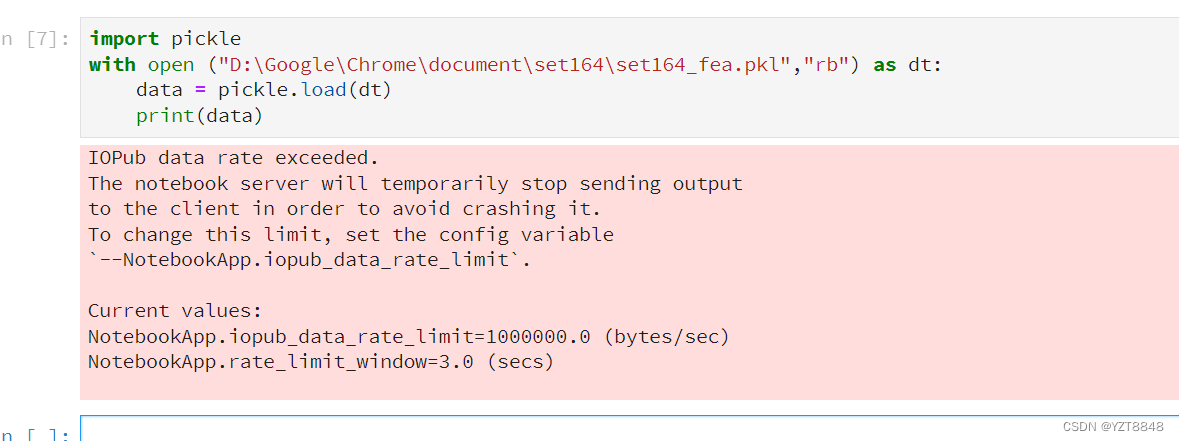
![IOPub data rate exceeded in Jupyter Notebook [Solved] | bobbyhadz Iopub Data Rate Exceeded In Jupyter Notebook [Solved] | Bobbyhadz](https://bobbyhadz.com/images/blog/iopub-data-rate-exceeded-in-jupyter-notebook/increase-iopub-rate-in-jupyter-notebook.webp)
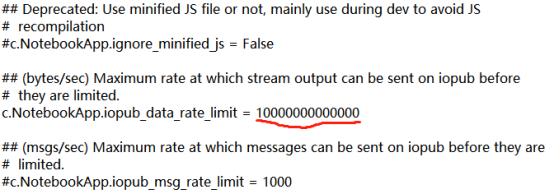


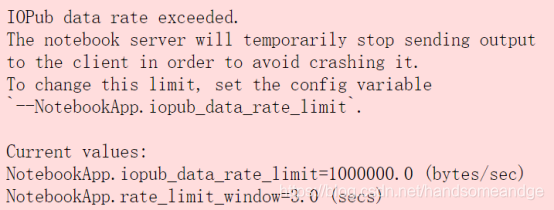

![Jupyter notebook]IOPub data rate exceeded Jupyter Notebook]Iopub Data Rate Exceeded](https://blog.kakaocdn.net/dn/cgbfZh/btqZEClzsK8/GGAQMZupeZM2MzRV8cidf1/img.png)


![2021.10.18] How to solve IOPub data rate exceeded on Jupyter notebook?(`--NotebookApp.iopub_data_rate_limit`.) 2021.10.18] How To Solve Iopub Data Rate Exceeded On Jupyter Notebook?(`--Notebookapp.Iopub_Data_Rate_Limit`.)](https://blog.kakaocdn.net/dn/lba6h/btrh93LI4xj/z1FinBdd8FwYvCF73PWPY1/img.jpg)


















Article link: iopub data rate exceeded..
Learn more about the topic iopub data rate exceeded..
- IOPub data rate exceeded in Jupyter notebook (when viewing …
- What Causes “iopub data rate exceeded” Problem and How to …
- IOPub Data Rate Exceeded in Jupyter Notebook When …
- Working with Jupyter notebooks – Anaconda Documentation
- Changelog — Jupyter Notebook 6.5.4 documentation – Read the Docs
- Iopub Data Rate Exceeded: Error Causes and How To Fix It
- IOPub data rate exceeded in Jupyter Notebook [Solved]
- IOPub Data Rate Exceeded in Jupyter Notebook When …
- IOPub data rate exceeded – Yaping Xu – Google Sites
- IOPub data rate exceeded. The notebook server will … – BytePro
- Iopub Data Rate Exceeded: Causes, Fixes, And Prevention …
- IOPub data rate exceeded JupyterLab – General
- IOPub data rate exceeded – Lightrun
See more: https://nhanvietluanvan.com/luat-hoc/